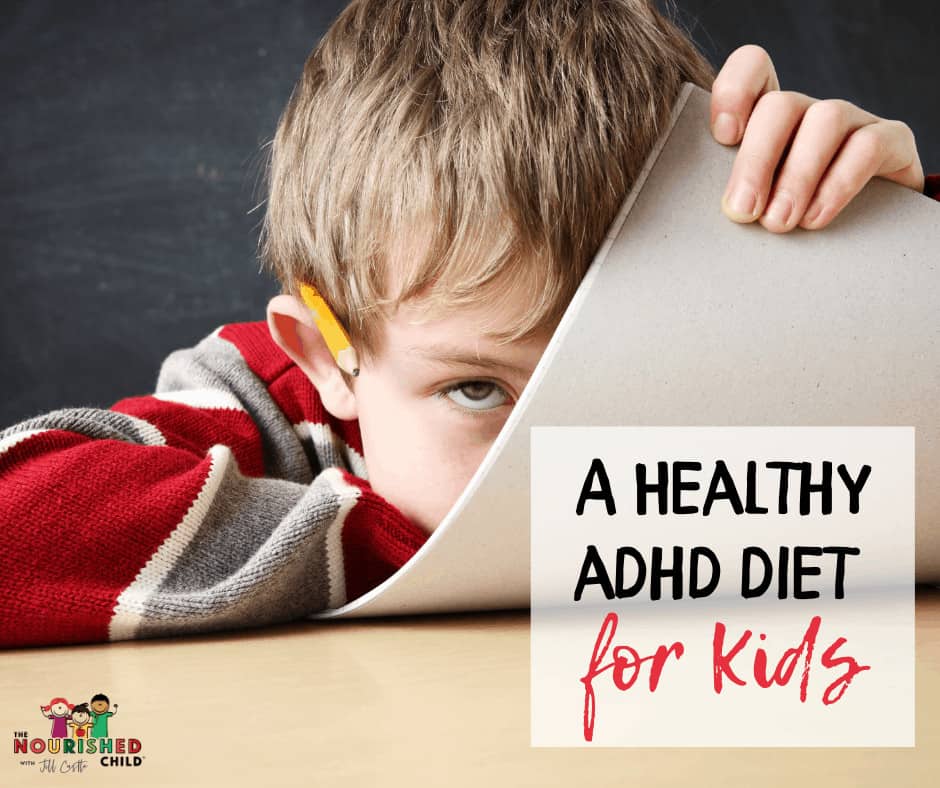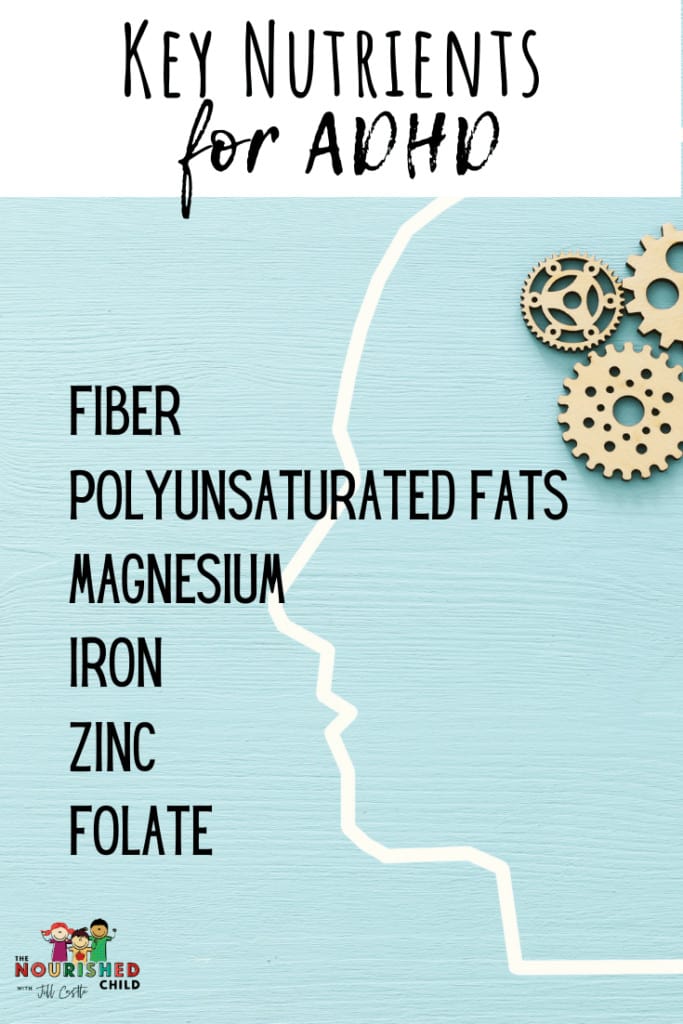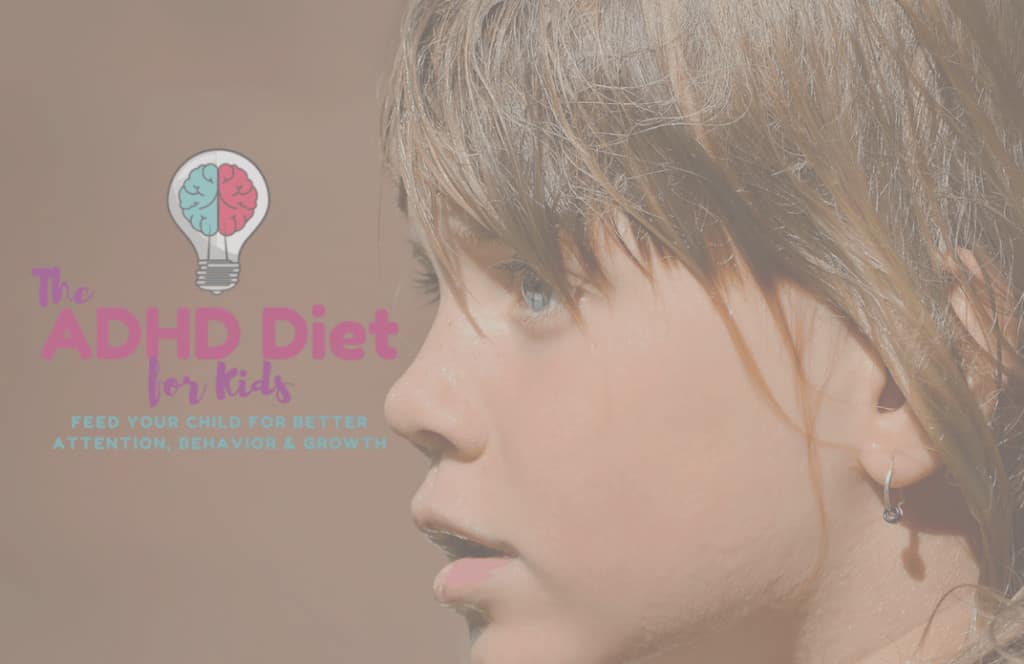Is Low Sugar Diet Good for Adhd
Nutrition helps children with Attention Deficit Hyperactivity Disorder learn, behave and grow. Find out how ADHD nutrition can improve their overall functioning and health.
In this article, you'll learn about ADHD food and the nutrients to include in a child's eating pattern, why nutrients are important, where to find them in food, and most importantly, how your child may benefit.

Why the Diet for a Kid with ADHD Matters
Kids with ADHD have the usual milestones to achieve, just as kids without ADHD do: To learn, to grow, and to experience the world around them.
Yet, kids with ADHD may also have other challenges with which to contend: Picky eating, unhealthy snacking, weight concerns (both underweight an overweight), constipation, and more.
It's not surprising that ADHD nutrition is an essential component to successful management.
As a pediatric nutritionist, I've helped children with ADD and ADHD eat a better diet, while helping and supporting their parents through daily feeding.
A diet for ADHD combined with medications can be an effective way to help children improve learning, pay more attention, and moderate any impulsive behaviors or symptoms of hyperactivity.
Not only that, good nutrition helps your child feel good and grow well.
ADHD and Food for Kids
A diet that is balanced with nutritious, wholesome foods rich in nutrients is good for kids with ADHD.
Minimizing added sugar, artificial food dyes and other additives is also good for them.
Yet, picky eating, impulsive eating and repetitive food patterns plague kids with ADD and ADHD. And this doesn't help them.
Feeding kids with attention deficit hyperactivity disorder should be based on a scheduled eating pattern as it ensures adequate nutrition is available throughout the day…even when the child isn't hungry.
When regular meals and snacks are eaten it can encourage better attention, behavior, satiety and growth.
Last, an ADHD nutrition prioritizes feeding interactions that are positive and encouraging.
[Watch The ADHD Diet on YouTube!]
Case Study: A Boy with ADHD
Peter (name changed) had ADHD. He was very thin, ate poorly, and was a picky eater. His diet consisted of mostly white foods, and rarely did a fruit or veggie pass his lips.
Give him crunchy, cheesy, salty, or sweet foods and he was a happy camper!
When Peter was diagnosed, he started on daily medications, which dampened his appetite. There were many days when the majority of his eating happened near the end of the day.
That's when his medications wore off and he was hungry.
Peter's mom wanted help with three main things:
- To help him to eat more vegetables,
- To encourage him to try new foods,
- And, to address his thinness by helping him gain some weight.
In essence, she wanted (and needed) to transition Peter to healthy ADHD meals.
Peter was easily distracted and made careless mistakes, so she was hoping a healthier diet would improve this.
In my professional opinion, I agreed. Peter needed to make the transition to a more nutritious diet.
His eating patterns were erratic and incomplete, and he wasn't eating enough. This was affecting his growth, behavior and ability to focus in the classroom, making learning challenging for him.
Parents who have kids with ADHD are generally concerned about picky eating, weight, and their child's behavior. #adhddiet #healthyeating #brainfood Click To Tweet
{Read} Even Dietitians Have Trouble Feeding Their Kids
ADHD and Nutrients
The childhood years are an incredibly important foundation to future adult health.
While research is still evolving, there is quite a bit of evidence that good nutrition can help a child with ADHD.
For instance, the brain needs nutrients to function well. From carbs to healthy fats, a nutritious diet is like washing the brain in nutrients it needs to function optimally.
Specifically, ADHD nutrition that focuses on a nutritious and balanced diet can help children with ADHD focus, behave better, and get along with others.
Plus, good nutrition maximizes your child's growth and may prevent chronic diseases down the road.
Unfortunately, studies have shown that some children with ADHD miss out on key nutrients in their diets and this may influence their ability to focus, behave and grow.
Medications, Appetite and ADHD
Good nutrition is not always easy to achieve. In the child with ADHD, for example, there can be many obstacles to eating well.
For instance, many of the medications used with ADHD may suppress your child's appetite, reducing his eating.
When on these meds, your child may have little to no appetite.
When off of the medications, he may have a voracious appetite.
Research has shown some medications are the reason behind stomach pain or nausea, which may be so uncomfortable that kids are disinterested in eating.
I cover the many reasons why children with ADHD aren't hungry in this article.
Picky Eaters and ADHD
Another barrier to good nutrition is picky eating.
Picky eating can stem from a sensory sensitivity to texture, smell or appearance,
Or, it can be learned along the way due to ineffective approaches and feeding mistakes.
Picky eating can certainly prevent your child from getting optimal nutrition.
Of course, there are more obstacles. When they pile up on each other, feeding your child can be a real challenge, and a real stressor for families.

ADHD Nutrition for the Child
I've personally witnessed how a food system and feeding strategy can help children with ADHD.
They feel and function better in the world.
We are learning more about what children with ADHD need nutritionally, which enables us to pinpoint the nutrients and foods that can help them.
The ADHD nutrition plan is made up of several components, including several nutrients you'll want to keep an eye on, plus adequate calories and regular opportunities to eat.
Attention to this can help ensure your child gets enough to eat and may improve his appetite.
Here are some of the key nutrients for ADHD:
1. Fiber and ADHD
Kids with ADHD tend to be lacking fiber in their diet. This is partly due to picky eating that eliminates fruits and vegetables from the diet.
Nuts, seeds and whole grain items like brown rice or whole grain pasta, as well as fruits and vegetables, are great ways to increase the fiber in your child's diet.
If your child struggles with constipation, you'll want to make sure fiber and fluids are getting fair representation in the daily diet.
My natural constipation relief guide can give you further insight.
2. Polyunsaturated Fats (Omega-3 Fatty Acids) and ADHD
Low levels of essential fatty acids/PUFAs are seen in children with ADHD. "Essential" means these nutrients aren't made by your child's body.
These fatty acids need to come from outside the body, in order to meet your child's requirements for them. In other words, they need to come from food or a supplement.
Healthy fats such as polyunsaturated fatty acids (PUFAs) are found mostly in plant sources like nuts, canola or safflower oils, as well as some fish.
PUFAs help blood circulate in the brain.
One type of fatty acid, called eicosapentaenoic acid (EPA) is known to improve blood circulation in the brain.
EPA has been shown in some research to reduce the symptoms of ADHD, such as improving attention and reducing hyperactivity and impulsivity.
Other studies have shown little effect.
We need more research. Offering your child sources of plant fats and fish is unlikely to harm him and we have plenty of evidence for other health benefits.
Another fatty acid, called docosahexaenoic acid (DHA) is an important element in nerve cell functioning.
A deficit of DHA in the diet has been associated with poor literacy.
Generally, research shows that supplementing with a blend of both EPA and DHA may be effective at optimizing overall function in the child with ADHD. Higher dosage levels of EPA in the fish oil blend is preferred.
Again, research is evolving and not conclusive at this time.
3. Magnesium and ADHD
In general, the role of magnesium in the body is to help calm nerves and muscles, encourage blood flow throughout the body, and process the calories and nutrients consumed from food.
Low magnesium is tied to more distractibility and hyperactivity.
A deficiency of magnesium has been seen in children with ADHD.
Researchers have noted that a diet rich in magnesium may help children with ADHD pay attention, focus and learn better. Foods with magnesium include beans, seeds, whole grains, almonds and other nuts.
4. Iron and ADHD
Inadequate iron in the diet, especially in the early years of life, is associated with poor cognitive development.
In other words, when iron deficiency exists during early brain development, the brain may not reach its full intellectual capacity.
An iron deficiency can have additional far-reaching consequences, such as poor immunity, fatigue, and poor learning later in life.
Some children with ADHD experience symptoms of iron deficiency. Low iron intake may show up as trouble sleeping and restless leg syndrome. Even if iron levels fall within the low end of normal blood level ranges, kids may have symptoms.
Children with ADHD, especially picky eaters, are of concern.
They may not be getting good sources of iron in their diet, such as beef, poultry, beans and dark leafy greens.
A documented iron deficiency should be treated with iron supplementation under the direction of your healthcare provider.
Too much iron can be harmful, so a healthcare professional can help you get the dosage right.
Iron supplementation in children with ADHD who are not iron-deficient may not be effective.
You'll also want to optimize iron sources in the diet.
5. Zinc and ADHD
Like iron, zinc is involved in brain development, nerve communication and other activities of the brain.
In children with ADHD, poor zinc status has been linked to inattentiveness (but not impulsivity or hyperactivity).
Low zinc status is also linked to poor growth and a poor appetite.
A zinc deficiency should be treated, possibly with supplementation.
Certainly, optimize zinc intake from food, such as beans, beef, fortified breakfast cereals and milk.
6. Folate and ADHD
In the typical Western diet and for some individuals, folate is inadequately consumed (despite fortification with folate in many grain products).
Adding foods rich in folate has been advised as part of a healthy diet for children with ADHD.
What Foods Should a Child with ADHD Avoid?
Certain foods have been identified as contributing to ADHD-oriented behaviors.
These are fast food items, red meat, processed meats, potato chips and other similar snack chips, high fat dairy products, and soft drinks.
These are the types of foods that are fine to have in your child's diet as long as they're in small amounts.
If fast food and other processed foods have a stronghold in your child's diet, you can slowly reduce and minimize them as much as possible.
Also, some children with ADHD react, or are sensitive to, additives in food, including food colors, food preservatives such as MSG, nitrates and nitrites, and artificial sugar (aspartame).
Studies have shown that about 8% of children with ADHD may be sensitive to artificial food colorings.
Some experts believe that number to be higher.
[Listen: My interview with Laura Stevens, a researcher in food dyes and how they affect children with ADHD in this episode of The Nourished Child podcast.]
If your child is sensitive to any of these, start to downgrade them, slowly but surely, in your child's diet.
What about Sugar and ADHD?
A small number of children demonstrate sensitivity to refined sugar (added sugar). They may demonstrate more aggression when they consume it.
Research isn't conclusive about whether the sugar itself is the trigger or whether it's the surges and plummets in blood sugar a child may experience when sugary foods are consumed.
If your child is sensitive, you'll want to trim it down.
Learn how to slash the sweets in your child's diet.
Feeding the Child with ADHD
Feeding kids with ADHD is optimal when structure, boundaries and guided choices are in place at home. As the brain relies on glucose (the simplest form of sugar that circulates in the body after complete digestion of food) for energy, it makes sense that regular meals and snacks be scheduled to offer up what the brain needs to function well.
It also makes sense that when a child goes for long periods without eating, his behavior, concentration and learning may deteriorate.
The brain relies on glucose for energy, so providing a regular supply of energy from food makes sense. Click To Tweet
That's why I always advise a structure to feeding kids with ADHD, emphasizing a regular eating schedule. Learn more about boundaries and guided choices.
Got an underweight child with ADHD?
I recommend more frequent meals and snacks during the day.
Even if your child will only drink a fruit-based smoothie or a cheese stick and crackers, their behavior, focus and general feeling of energy and positivity will benefit from small feedings throughout the day.
A Positive Vibe at Mealtimes
Feeding your child with ADHD can be difficult, and a struggle.
There may be behaviors, eating habits, and other challenges you have to navigate on a daily basis.
Remember to always try to keep food and feeding a positive encounter, without pressure or negative emotions.
Change is good, but keep it slow and gradual!

Got a Child with ADHD?
I created a comprehensive class for parents like you to learn the ins and outs of nutritional management in the child with ADHD. From meal plans to specific nutrients and specialized diets, you'll learn everything you need to know about ADHD nutrition including essential food and nutrients, feeding strategies and how to overcome common food challenges so that you can help your child function at his or her best. Check it out!
This post was updated in July, 2021.
Is Low Sugar Diet Good for Adhd
Source: https://thenourishedchild.com/healthy-adhd-diet-kids/
0 Response to "Is Low Sugar Diet Good for Adhd"
Post a Comment